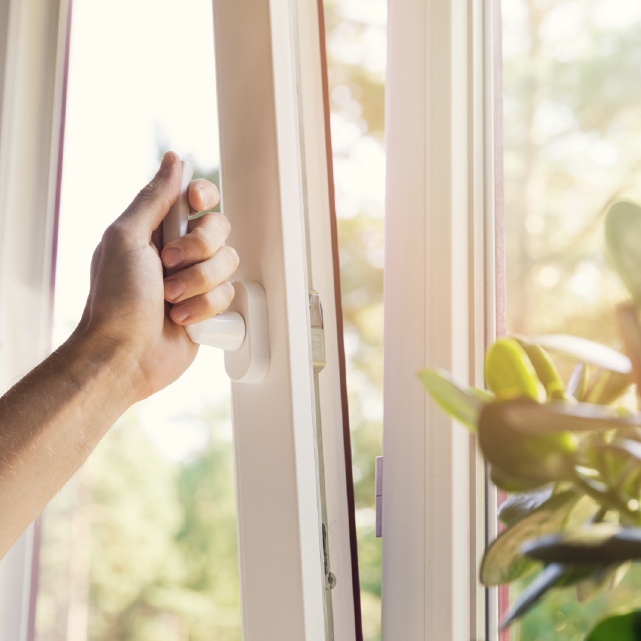
Good indoor air quality (IAQ) is crucial to keep your home free of allergens and potential airborne contaminants. Poor air circulation can cause a build-up of harmful elements such as mold, radon, carbon monoxide, dust, and gasses. One of the easiest ways to maintain a healthy IAQ and keep your home safe is to look at your current airflow and ventilation situation. Introducing fresh air into your home can help alleviate odors, humidity, pollutants, and dust. So, how much ventilation does your home need? Our HVAC experts answer that question and more below.
How is Home Ventilation Measured?
The amount of fresh air you need to promote a good IAQ depends on the size of your residence. The rate at which outdoor air replaces indoor air is described as the air exchange rate. The American Society of Heating, Refrigerating and Air-Conditioning Engineers (ASHRAE) recommends that a home receive at least .35 air changes every hour (35% of its total air volume). It should also be at least 15 cubic feet of air per person per minute. For example, in a household of three, there should be a minimum of 45 cubic feet of air rate exchange per minute. This is where ventilation becomes crucial to provide good IAQ.
How Does a Home Ventilate?
To ensure you are correctly ventilating your home and achieving your target air exchange rate, you need to let your home breathe. Stifled indoor airflow can produce unhealthy moisture and humidity levels, dust, gasses, and other pollutants. To combat potential problems and clean your air, you want to introduce as much fresh air as possible. Residences aren’t airtight, so some airflow occurs naturally. However, you’ll need a ventilation plan to ensure you get healthy doses of fresh air.
Ways to Get More Fresh Air
There are many ways to improve your home ventilation—from utilizing windows to maximizing your HVAC capabilities:
- Open Windows and Doors: Natural ventilation is an easy way to let out stagnant air and bring in fresh air. Opening windows and doors can quickly increase your air rate exchange and help rid your home of airborne contaminants. However, remember that outdoor pollutants can also enter your home, so be mindful of your outdoor air quality. For some people, this is not a viable option alone.
- Spot Ventilation: Spot ventilation relies on localized exhaust fans to draw potential contaminants from the air as they are being created. Examples include bathroom fans that remove moisture and stove-top hood fans that clear out food fumes and particles.
- Whole-Home Ventilation: Residential HVACs are prime examples of whole ventilation systems. Using fans and duct systems, heating and cooling units effectively control air exchange rates. They remove air from your home, vent it outside and pull in new air from the outside. This makes them one of the most reliable and efficient ventilation options. There are also energy-efficient whole-home ventilation systems to maximize air rate exchanges.
Signs You Need Better Ventilation
Does your home need better air quality and more fresh air? There are a few warning signs to look out for:
- Excessive humidity, dampness, and signs of mold and mildew
- Lingering orders, especially from areas like the kitchen, bathroom, and attics
- Higher than normal radon and carbon monoxide levels
- Accumulations of dust
To correctly measure your indoor air quality and ventilation exchange rate, contact your HVAC company. Technicians can fully assess your situation and recommend solutions to any airflow problems you are experiencing.
Home Ventilation and HVAC Services in Portland and Beaverton
If you need help assessing your IAQ and home ventilation needs, AAA Heating and Cooling is here to help. We can thoroughly inspect your home, repair HVAC systems, and install top-of-the-line ventilation equipment. Schedule an appointment today for all your heating and cooling needs.

